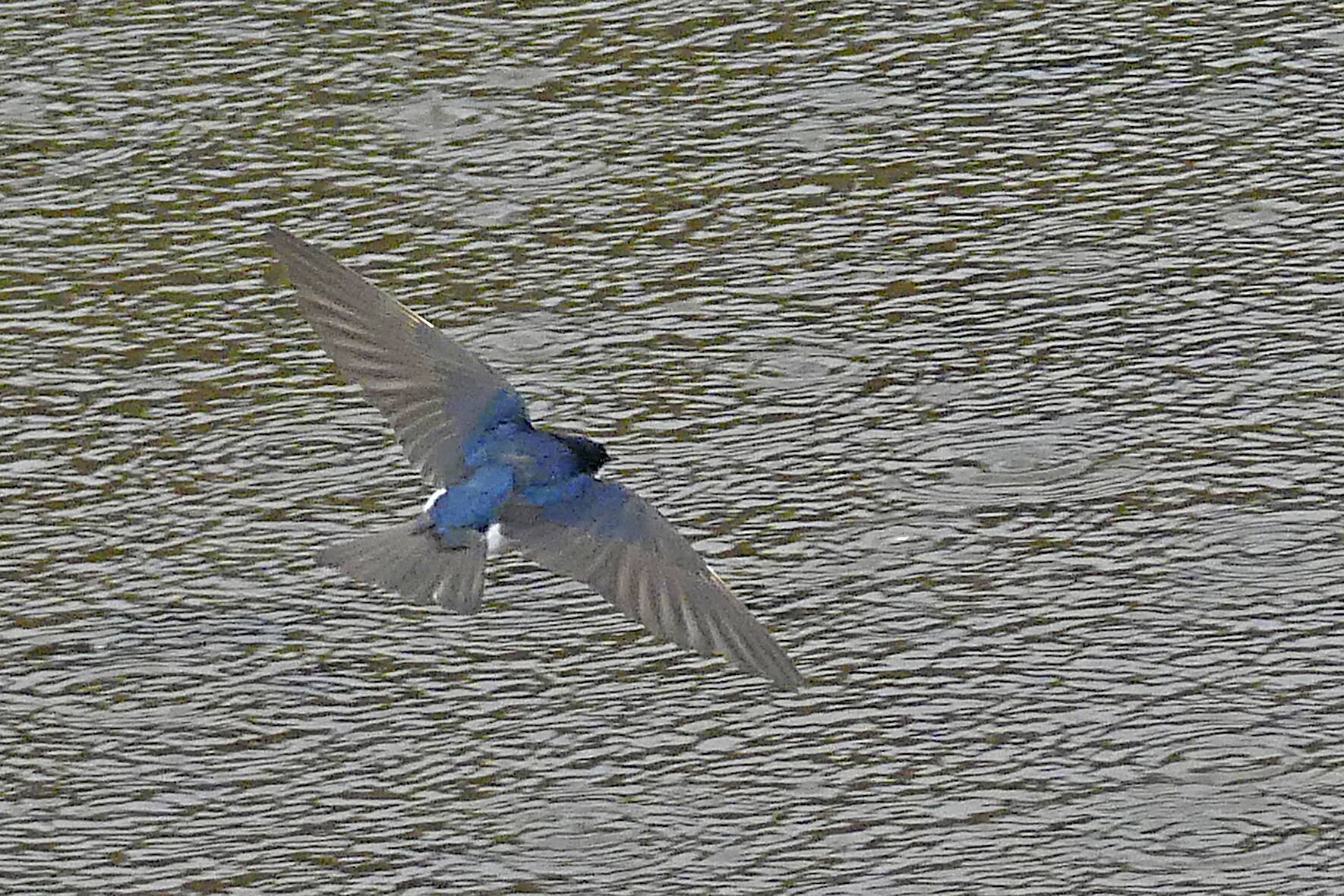On a gray, drippy day at the end of June, a friend and I walked briefly at Fish Creek. The roses were blooming and thimbleberries bore green fruits. A song sparrow say and chipped, a savannah sparrow looked at us suspiciously before hiding in the tall vegetation. Somewhere up the slopes, a kingfisher rattled invisibly.
The best show was an aerial feeding frenzy. A big flock of birds was swooping high and low in a big circle on one side of the wooded “island.” I could identify Vaux’s swifts and violet- green swallows as they darted back and forth, and there was another kind of swallow that eluded a name. The activity continued for quite a while, always over the shallows and the rocky beach in the same area. I presume there was a hatch of some insect that offered a tasty lunch.
A person was sitting on the upper beach, watching other people down at the water’s edge. In passing, I mentioned that active flock of foragers overhead. The sitting person said that fish were jumping out in the deeper water and those flocking birds were probably trying to catch fish. Really!!?? Hmmm. What an image that would make!
Vaux’s swifts spend most the day on the wing, seldom landing except at a nest or at a roost. They even copulate in mid-air. Extremely agile in flight, they have narrow wings that sometimes give the illusion of not beating in unison, but that’s a result of their rapid change of orientation in the air. The species was named for a nineteenth century American geologist/mineralogist (with a French name) by an ornithological friend. The name is pronounced (not in French) “vawks.”
These swifts nest in western North American as far north as Southeast Alaska. They nest sometimes in old brick chimneys or deep nest boxes but mostly in hollow trees. So they are dependent on old-growth forest with partly rotted trees and old woodpecker cavities, as is true for many other hole-nesting birds.
The nest is a little shelf of twigs that are glued to a vertical surface with sticky saliva. Both parents build the nest and share the duties of parenthood. There may be as many as seven eggs in a nest. Because incubation doesn’t start until all the eggs have been laid, the eggs all hatch on the same day, after about nineteen days of incubation. The chicks all stay in the nest for another nineteen days or so and then they start to perch on the wall beside the nest for about ten days more. Parent birds capture aerial insects by the mouthful and carry buggy boluses to the chicks. Some nests seem to be tended by more than two adults, indicating that there may occasional helpers.
Come fall, they migrate south in big flocks, mostly toward Central America. Fish Creek has been known as one place where local swifts gather in preparation for the big journey. On the way, they roost communally, forming clusters of thousands in deep cavities of hollow trees, occasionally resting in exposed sites on the outside of the tree trunk.
Violet-green swallows are cavity nesters too, in old woodpecker holes, cliff crevices, and nest boxes, and occasionally in old nests of other swallows and holes in tall cacti. They nest in western North America and Central America, wintering in Central America. Montane coniferous forest is their favored nesting habitat in the southern part of the range, but farther north they can nest in various kinds of forest at sea level. Sometimes violet-greens nest in small colonies, with several pairs in one dead tree, but usually they are solitary nesters.
The nest is a clump of grass stems and twigs, topped by a thick pile of feathers. Pairs are said to be socially monogamous (perhaps with some extra-marital excursions) and females do most of the nest-building. Incubation by the female starts with the first-laid eggs, so the four-to-six eggs don’t all hatch on the same day. Incubation takes about fifteen days and chicks leave the nest after about twenty-four days. Violet-greens are insect feeders, catching bugs on the wing. Female parents do most of this work. Nest sanitation is good when the chicks are small, but apparently the nest gets quite messy as the chicks get older. This species is less thoroughly studied than some of the other swallows.

